Multipurpose Cash Assistance
Multipurpose Cash (MPC) are unrestricted cash transfers that people affected by crises can use to cover their basic needs. By its nature, MPC is the assistance modality which offers people a maximum degree of choice, flexibility and dignity. There is also growing evidence that it is more cost-efficient and cost-effective to meet multiple needs.
But this requires new ways of collaborating between humanitarian actors, at all stages of the program cycle, and across sectors. While solid tools exist to support collaboration, they have not been widely adopted and MPC is still used in an ad-hoc way. Challenges remain to be addressed if we are to successfully fit MPC into the humanitarian system.
Featured content

Multipurpose cash outcome indicators and guidance
Guidelines and Tools
The indicators in this document, developed by the Grand Bargain Cash Workstream, focus on the primary objectives of humanitarian Multipurpose Cash Assistance (MPC), and the outcomes to which MPC can most strongly contribute in a given context.
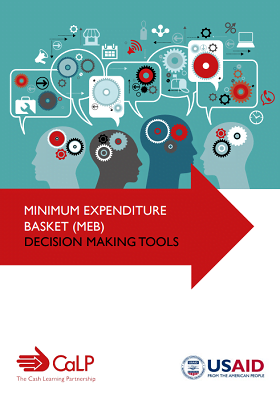
Minimum Expenditure Basket (MEB) Decision Making Tools
Guidelines and Tools
Update: This publication was revised in 2022. Please read the revised publication here.
The purpose of this tipsheet is to accompany practitioners and decision makers through key stages in the process of calculating an MEB to: (a)
identify what is the most appropriate path to take in relation to their
particular context, identified objective, existing capacities and available
resources; and...
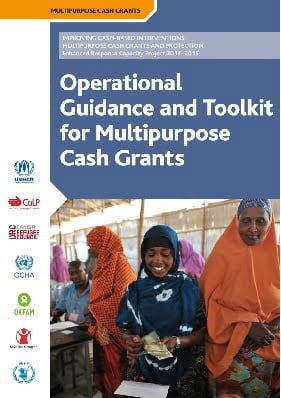
Operational Guidance and Toolkit for Multipurpose Cash Grants
Guidelines and Tools
This operational guidance and toolkit brings together worldwide expertise on cash-based interventions (CBIs). It provides comprehensive and practical guidance for humanitarian actors to assess the feasibility, conceptualise the design and structure the implementation of MPGs. The guidance focuses on MPGs whose primary objective is to meet basic needs as defined by affected people...

Definition of Minimum Expenditure Baskets (MEB) in West Africa
Report
Throughout 2017, five countries in West Africa have worked collectively to define minimum expenditure baskets, in order to better capture the contribution that humanitarian assistance is making to address the basic needs of affected populations, and improve the impact of assistance. This heavy process raises technical and coordination challenges. The CALP Network, with support from USAID /...
Thematic lead
Latest

Exploring GBV Risk Mitigation in Iraq and Colombia
Case Study
In 2022, UNFPA and the Global Women’s Institute (GWI) at George Washington University undertook operational research in Iraq and Colombia with the goal of developing proxy indicators for mitigating GBV risk to women who receive cash assistance. Proxy indicators for detecting GBV risks to women in cash...
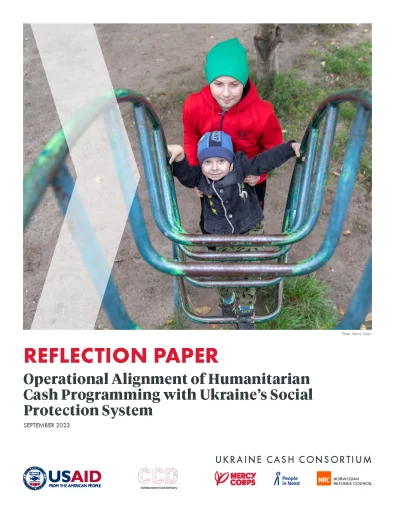
Operational Alignment of Humanitarian Cash Programming with Ukraine’s Social Protection System
Report
This paper explores the extent to which humanitarian Multipurpose Cash Assistance (MPCA) in Ukraine has been able to leverage different elements of the delivery chain of national social protection (SP) programming. The basis of this paper is the framework developed by Seyfert et al., in their 2019...

What’s Next for Cash: Mercy Corps’ approach to cash and voucher assistance
Presentation
The brief outlines Mercy Corps' CVA approach & standards applied across our CVA portfolio and sets the direction for CVA in Mercy Corps moving forward.
The approach outlines how CVA contributes to Mercy Corps Pathway to Possibility strategy by focusing on areas that drive impact & sector leadership,...

Building Capital in Crisis: How women in CARE’s VSLAs in Emergencies increase savings and solidarity
Report
Since 2017, CARE has piloted and refined our VSLA in Emergencies model to reach people in need of humanitarian assistance and provide an approach that can reduce long term vulnerability while being more sustainable. In this second report on our pilot research, we provide insights from three pilots in...

Post-Distribution Monitoring (PDM) – Multi-Purpose Cash Assistance
Case Study
Starting August 2022, WFP collaborated with the Ministry of Social Policy (MoSP) to serve people who had registered for humanitarian assistance through the E-dopomoga platform. Using the E-dopomoga registry, WFP oriented its cash assistance towards parts of the country closest to the frontline and most...
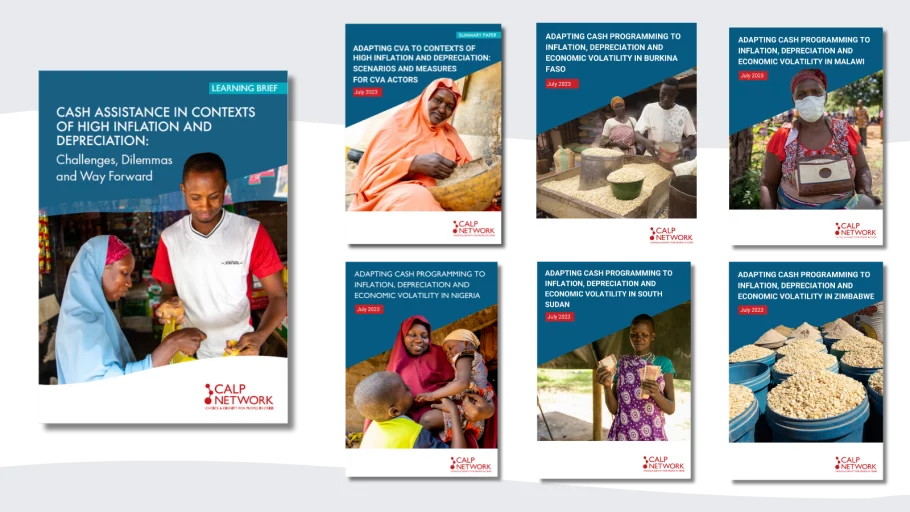
Adapting Cash Programming to Inflation, Depreciation and Economic Volatility
Case Study
The CALP Network supported country cash working groups (CWGs) in five African countries – Burkina Faso, Malawi, Nigeria, South Sudan and Zimbabwe – to agree on clear and predictable processes for adapting CVA programmes to economic volatility. These reports capture the resulting recommendations,...

Multi-purpose cash assistance for Lebanese – Inter-agency Joint Learning Event Learning Brief
Case Study
On June 27th 2023, Mercy Corps co-organized with Acted, Concern and Oxfam a learning event on the implementation of Multipurpose Cash Assistance (MPCA) interventions for Lebanese. While the MPCA modality has been initiated and designed around the assistance to refugees, the provision of unconditional cash...
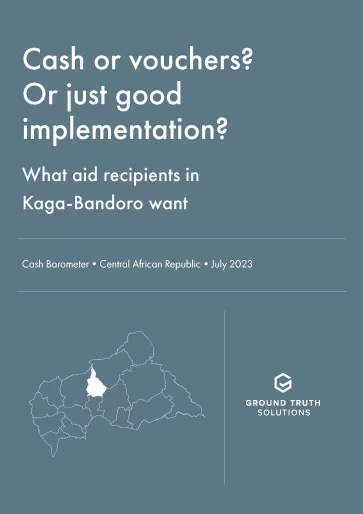
Cash or Vouchers? Or just good implementation? What aid recipients in Kaga-Bandoro want
Report
In April 2023, GTS met with people who had received cash and voucher assistance (CVA) in Kaga-Bandoro. Through in-depth individual interviews and focus group discussions at the Lazare camp for internally displaced persons (IDPs) and in the Abdallah neighbourhood, GTS sought to uncover the preferred...
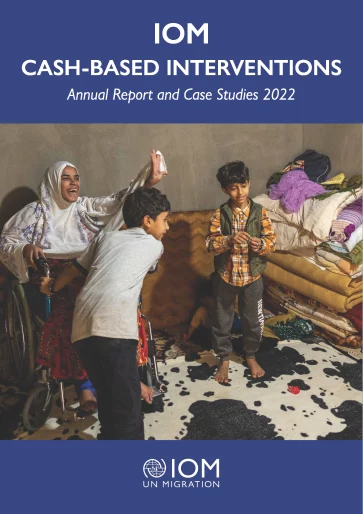
IOM Cash-Based Interventions Annual Report and Case Studies 2022
Case Study
Since 2019, IOM has placed special attention on building capacity to increase the use and coordination of cash-based interventions (CBI) across the organization in line with the Grand Bargain commitments. Following the successful implementation of the IOM Strategy for Humanitarian CBI 2019–2021, the...

Shelter Considerations for Minimum Expenditure Basket Development and Multi-Purpose Cash Assistance Program Design: A Guidance Note
Guidelines and Tools
This tip sheet was developed by the Global Shelter Cluster and CRS, co-facilitator of the Shelter, Cash and Markets Community of Practice (CoP), and was reviewed by various coordinators and several CoP members, for use by country-level Shelter Cluster Coordinators and other practitioners who are requested...

Investigating Operational Models for Multi-purpose Cash Delivery and Links to Social Protection: Spotlight on the Middle East and North Africa
Report
This piece of research looked at six case studies in the MENA region where CVA is being delivered at scale. It looked at the characteristics of the operational models of delivering multi-purpose cash assistance (MPCA), and how that enables (or not) links with existing national social protection...
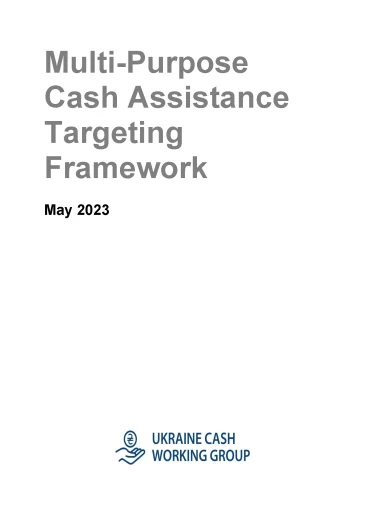
Multi-Purpose Cash Assistance Targeting Framework
Guidelines and Tools
Multi-Purpose Cash Assistance (MPCA) is currently the preferred response modality to cover basic needs of affected populations across Ukraine. The multi-sectoral response seeks to use MPCA to address the basic humanitarian needs of affected people in a holistic manner, reaching 5 million people in 2022....
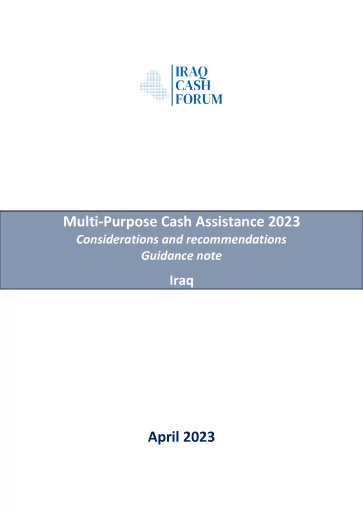
Multi-Purpose Cash Assistance 2023: Considerations and recommendations
Case Study
MPCA has been a major component during the humanitarian response in Iraq and it has been proven to be a successful assistance to support vulnerable populations to meet their immediate needs. During the past years, members of the Cash Working Group (CWG) agreed to harmonise the MPCA approach and its...
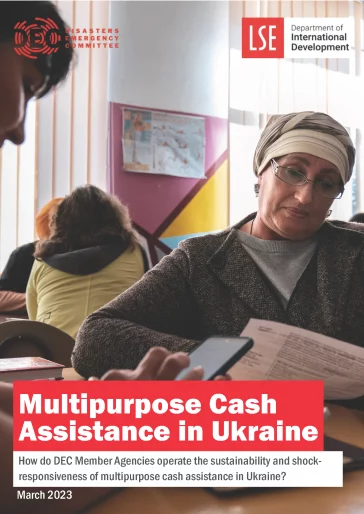
Multipurpose Cash Assistance in Ukraine: How do DEC member agencies operate the sustainability and shock-responsiveness of multipurpose cash assistance in Ukraine?
Report
The humanitarian response following the Russian invasion of Ukraine on February 24, 2022, triggered the fastest and largest scale-up of cash programming in humanitarian history. Humanitarian actors transferred over US$1.2 billion in the form of multipurpose cash assistance (MPCA) to approximately 6...
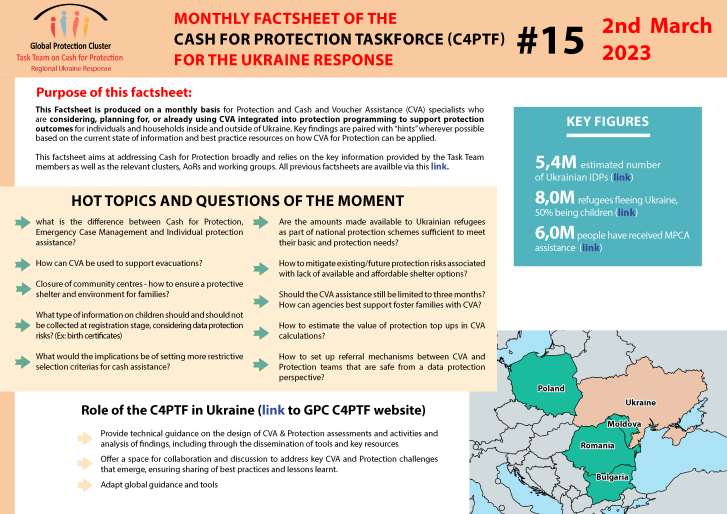
Monthly factsheet of the Cash for Protection Taskforce (C4PTF) for the Ukraine Response
Report
This Factsheet is produced on a monthly basis for Protection and Cash and Voucher Assistance (CVA) specialists who are considering, planning for, or already using CVA integrated into protection programming to support protection outcomes for individuals and households inside and outside of Ukraine. Key...

Ukraine: Unlocking a more effective humanitarian response (Presentation)
Presentation
This slide deck was used in the 8 February 2023 webinar organised by CALP, Ground Truth Solutions and Humanitarian Outcomes title: “Ukraine: Unlocking a more effective humanitarian response”. Agenda Brief presentations Key findings from Ground Truth Solutions, Marina Key findings from the Ukraine...
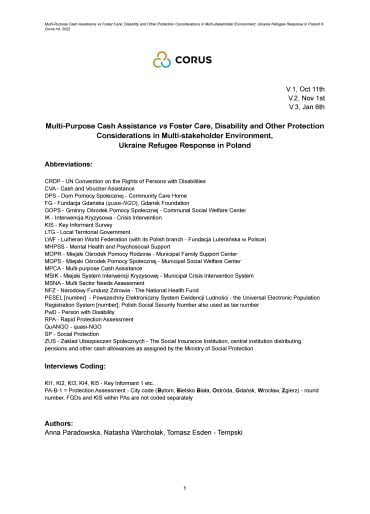
Multi-Purpose Cash Assistance vs Foster Care, Disability and Other Protection Considerations in Multi-stakeholder Environment, Ukraine Refugee Response in Poland
Case Study
This short research paper on strategic linkages between localized cash response, protection and social protection in Poland offers medium dive into the subject matter. The methodology involved both desk-based analysis, visits and interviews as part of a qualitative survey focused on the response in the...
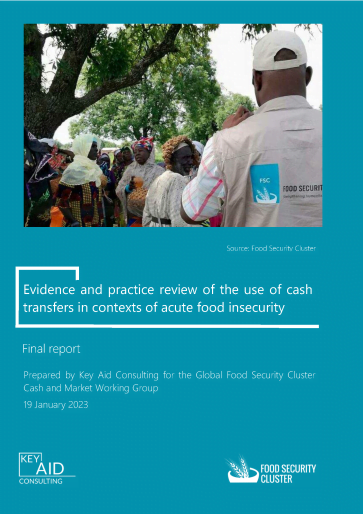
Evidence and practice review of the use of cash transfers in contexts of acute food insecurity
Report
Commissioned by the Global Food Security Cluster Cash and Market Working Group, this piece of operational looks at the use of cash transfers in contexts of extreme food insecurity. With interviews collected with partners in Syria, Nigeria and Somalia it seeks to highlight and understand lessons learned...

Survival minimum expenditure basket, minimum expenditure basket, gap analysis and transfer values for cash programming
Case Study
The CWG in Iraq has updated the SMEB and has designed a new MEB and gap analysis to inform the transfer values for cash programming in 2023. This document is a technical note with the summary of the values and the methodology.
With the coordination and technical support of CashCap and the Data analysis of...
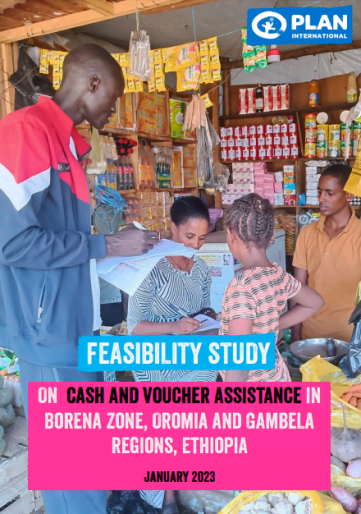
Feasibility study on cash and voucher assistance in Borena zone, Oromia and Gambela regions, Ethiopia
Case Study
The report indicates the feasibility of cash and voucher assistance in Borena, Oromia and Gambela regions of Ethiopia conducted in December 2022.
The following key determinants, were used to arrive at a conclusion if the CVA modality will be feasible to achieve the set outcomes to provide integrated...




